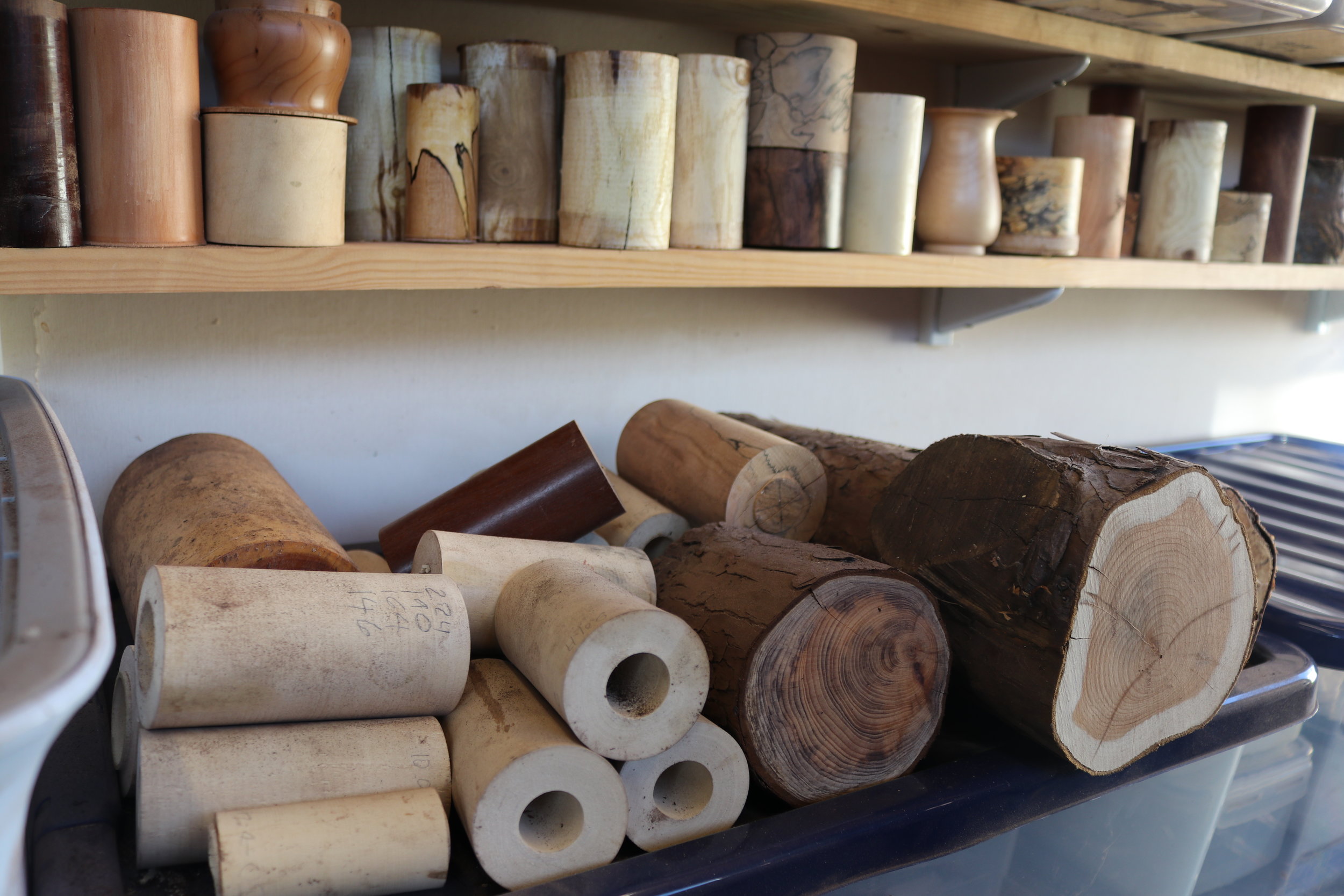Working Method
Being self taught, my working methods may seem idiosyncratic, but best suit what I am striving to achieve; the production of truly hand made artefacts with visual and tactile appeal. The main difference from conventional lathe operation is that each box body, and the blackwood which comprises the others elements, is permanently fixed to a taper until completion. This allows individual units to be precisely relocated on the lathe over a long period for reworking as inevitable distortion occurs due to moisture change and tension release within the wood. The box parts only come together when change is minimal and that primarily due to variation in ambient humidity.
The African blackwood (dalbergia melanoxylon) I use on each box is now coming mainly from Mozambique. Some old stock is still available but this is becoming increasingly difficult to source and must eventually be depleted. The benefit of old stock is that it is usually partially waxed only and has, therefore, undergone a prolonged drying process which makes it available for immediate use. The current, limited, imported blackwood turning stock has generally been fully waxed immediately after cutting to size and, consequentially, has to be dewaxed on receipt and slowly dried at ambient temperature for several years before it can be used for most turnery projects. Blackwood cannot be kiln dried. I am constantly seeking old stock but also have new material at various stages of moisture loss to ensure continuity.
Most tools are home made and proprietary equipment is basic. My strongly held belief is that "hand made" should describe a process which avoids unnecessary tooling and machine working and which results in the items produced being individual.
Sourcing Wood
A large number of tree species worldwide are now, quite rightly, under CITES (Convention on International Trade of Endangered Species) restriction. The vast majority of those so affected do not come under the category of desirable wood turning species, however nearly all of the "exotic" turning timbers are under some degree of restriction, which not only makes sourcing difficult but has also caused a substantial increase in their price.
All the "exotic" wood species which I use have been purchased from reputable suppliers and mainly from stock laid down by them prior to the application of the current restrictions.
As stated above, African Blackwood is still available for limited importation to the UK but is scarce and difficult to source, especially in larger sizes.
That said, my wood stock, built up over many years, allows me to produce with a good range of timber species and, as I am not a large user, I can seek out smaller items of old "hidden" stock to increase the range. Hand crafting means that two completed boxes per week is my average output.
Most of the indigenous woods I use are sourced, cut from the tree and prepared personally. Typically the conversion rate for such sourcing is well below ten percent which, fortuitously, means the firewood conversion rate is well above ninety percent.


























